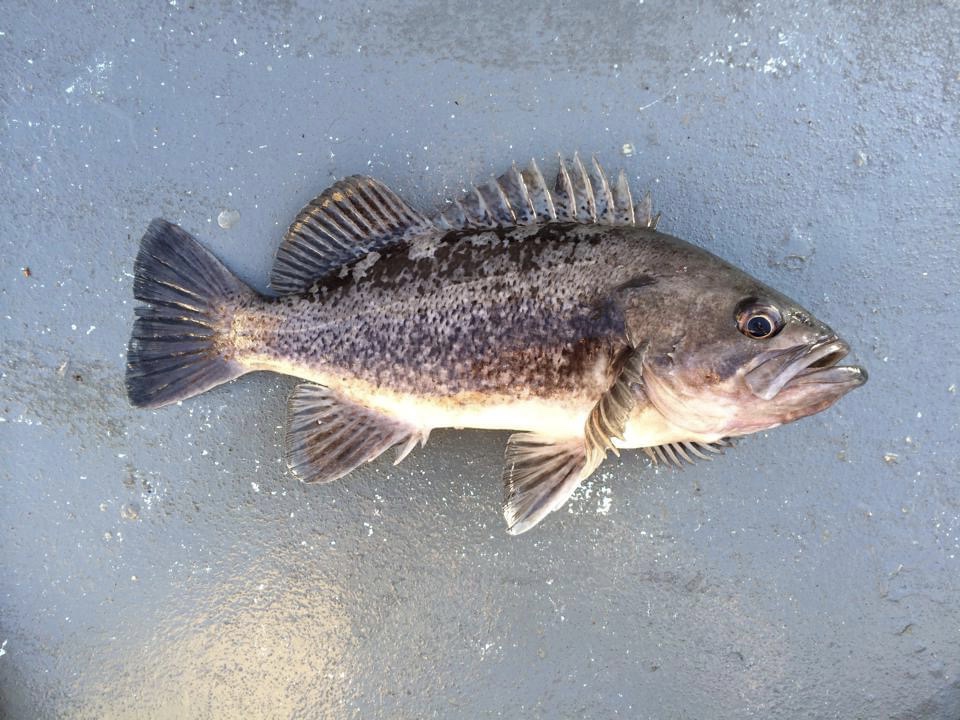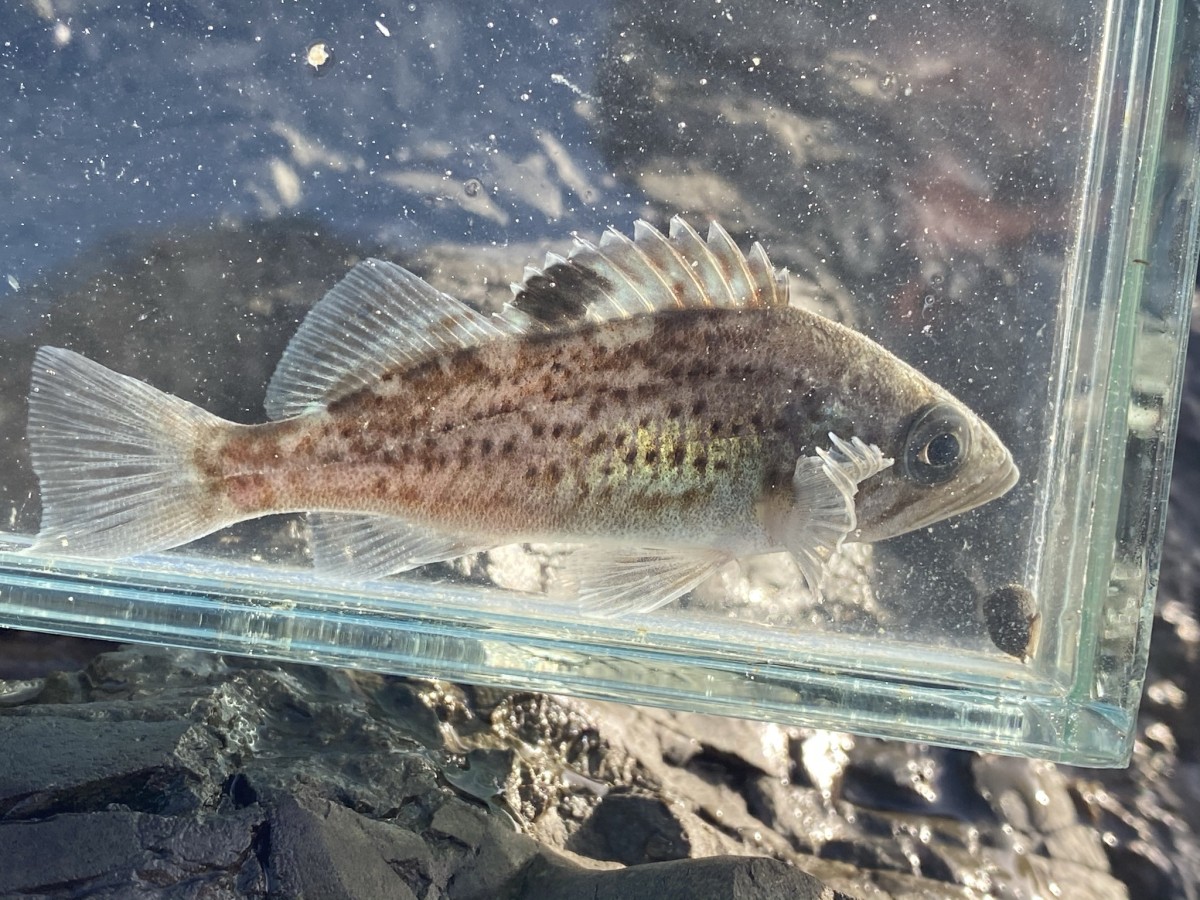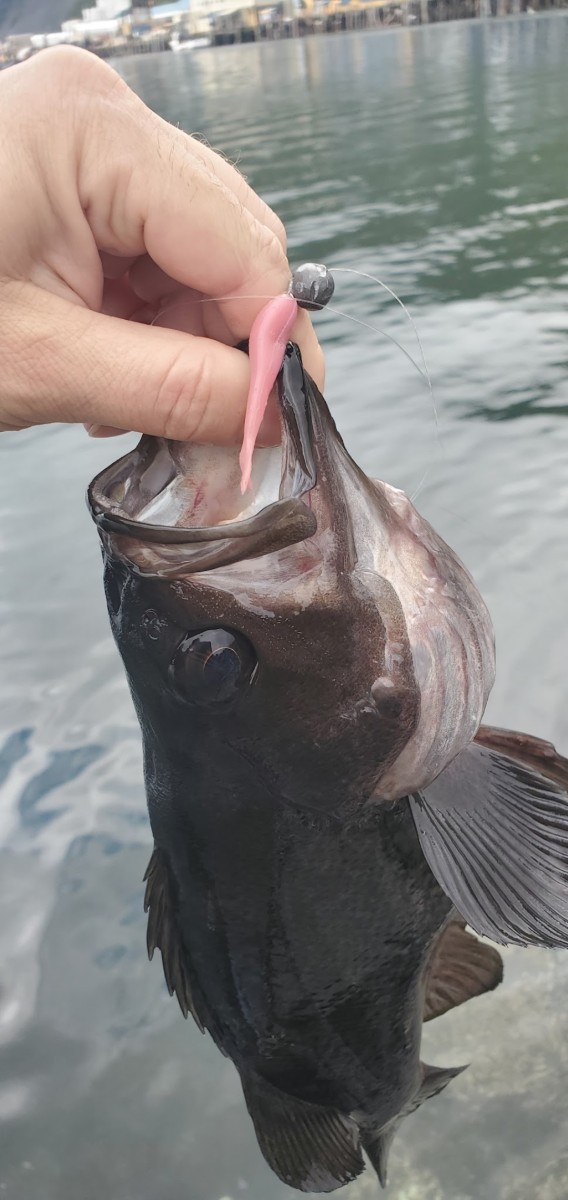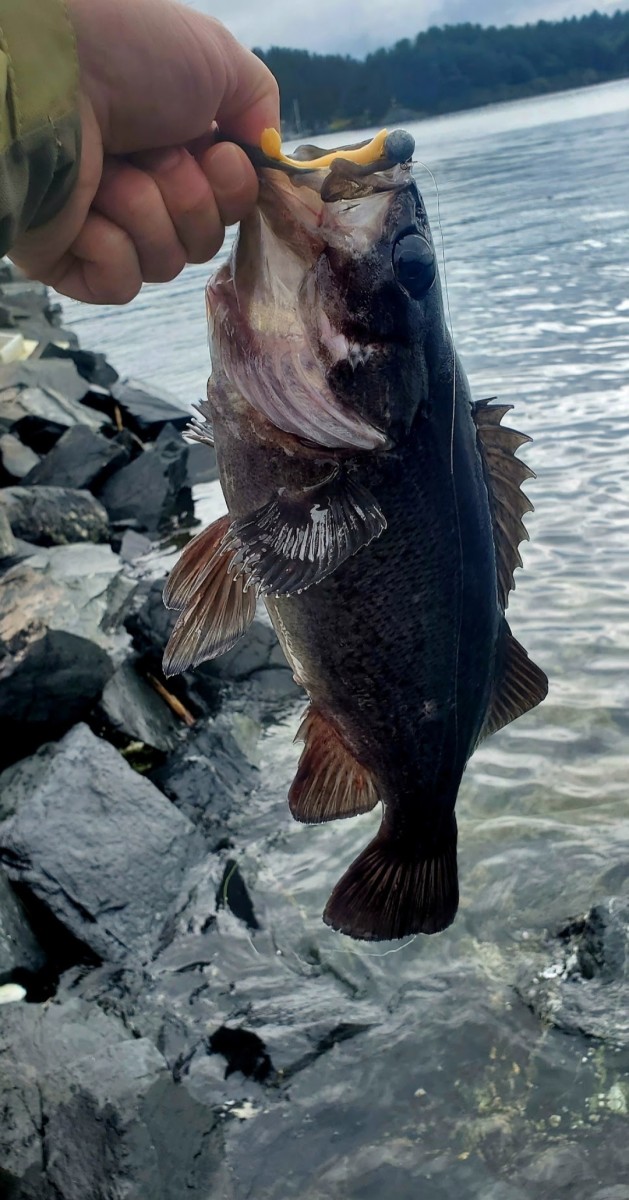Black rockfish
(Sebastes melanops)
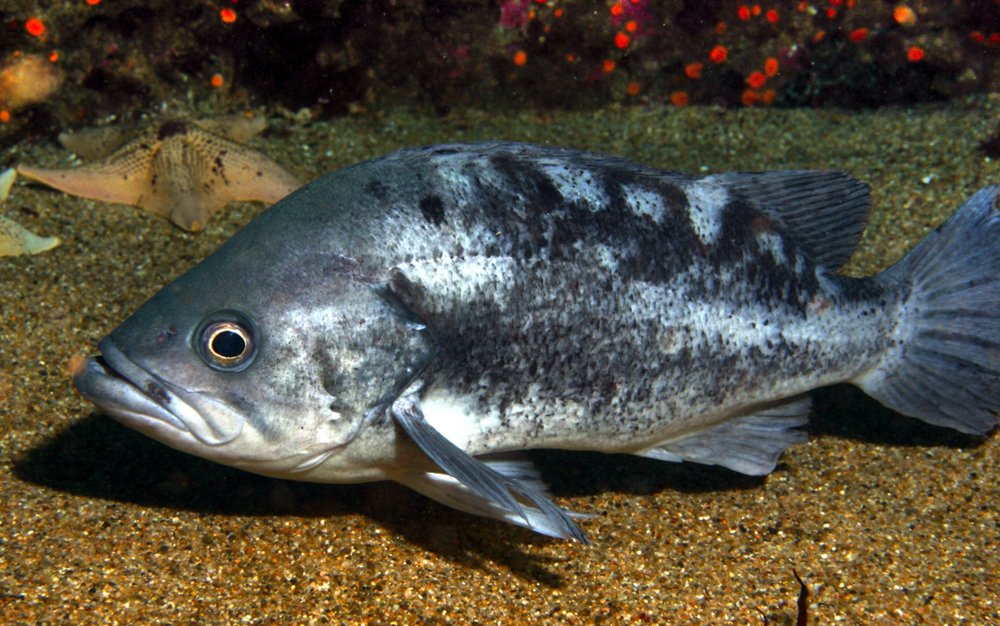
Classification
General data
The black rockfish has a fusiform body which is deep and laterally compressed. The head is weakly spined with only the nasal spines always present while the preocular and postocular spines are normally absent and the supraocular, tympanic, coronal, parietal, and nuchal spines are always absent.
The head eyes are moderately large eyes with a bulge in the intraorbital space and the upper jaw reaches to the posterior margin of the eye. They have a continuous dorsal fin which contains 13-14 spines and 13-16 soft rays. The membranes between the spines are deeply incised. The anal fin has a rounded posterior profile and contains 3 spines and 7-9 soft rays. The caudal fin is truncated to emarginate.
The overall color is mottled grey and black with a black spot on the posterior of the spiny dorsal fin which fades as the fish grows. Adults can have dark stripes on the head running from the eye over the operculum. The dark color on the upper body is frequently paler than that on the flanks, leading to a mottled appearance. This dark color fades to white on the underside.
The black rockfish attains a maximum total length of 63 cm (25 in) and has a maximum published weight of 4.8 kg (11 lb).
The black rockfish is found in the northeastern Pacific Ocean from Amchitka Island in the Aleutian Islands of Alaska to Santa Monica Bay in California. There have been two records of this species from the Iwate Prefecture of northern Japan. This species is found in the waters of the continental shelf and is associated with reefs at depths down to 366 m (1,201 ft) but it is more typically found between 182 and 274 m (597 and 899 ft) They frequent areas of rocky reefs and live among kelp, as well as jetties and other structures.
